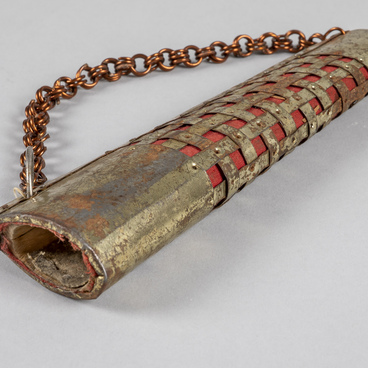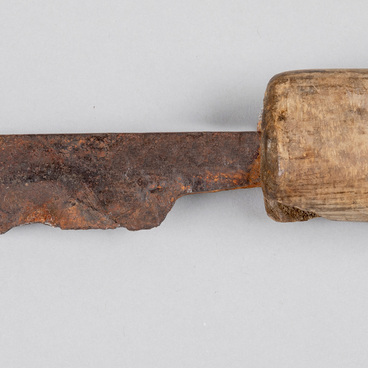The large handle of the knife allows one to make deep powerful cuts, the narrow and the relatively thin blade — to get to hard-to-reach places. With such a knife it is easy to drill holes: thanks to the one-sided “chisel”-like edge, one can make a smooth and nice cut.
The handle of a traditional Khanty hunting knife is made of birch burl, which is a very rare natural material.
Such knives have another feature: they can be equipped with a scabbard called “purtes” which has a seam on the side and is lined with wood on the inside. The scabbard has a loop with which it can be attached to a belt (tasma) with metal buttons. Oftentimes, such belts feature a strap with a bear’s fang hanging at the back — for good luck.
When the Khanty ride deer in the inter-season period, they inevitably come across the issue of the sled runners freezing — so to scrape off the ice, they use a knife called “yenk voshamty keshi”. Both of the knife’s bevels are sharpened at an angle of about 45 degrees on both sides. The knife is kept in the sled.
The Khanty have special knives for women. Such knives are both a tool for performing various tasks and a household utensil. If necessary, they can be used for fortune telling, after they are fumigated.
There is a separate knife called “vanschast keshi” for doing handicrafts, and carving and cutting “khonshi” patterns. Women have three knives they use in the kitchen: the first is for cutting dough, meat and fish, the second — “n’an keshi” — for cutting bread, and the third one, called “put keshi”, is used for scraping pots.





